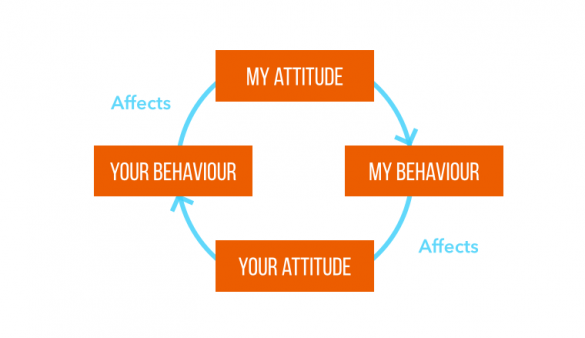The Betari Box is a model that explains the relationship between attitude and behavior. It was first proposed by psychologist Icek Ajzen in the early 1980s and has since been widely accepted and used in the field of psychology.
According to the Betari Box model, behavior is influenced by both attitudes and subjective norms. Attitudes are our evaluations or beliefs about a particular object, person, or issue. They are based on our values, beliefs, and past experiences, and they can range from positive to negative. Subjective norms, on the other hand, are the perceived social pressure or expectations to behave in a certain way. They are influenced by the attitudes and behaviors of the people around us, as well as our own personal values and beliefs.
The Betari Box model proposes that attitudes and subjective norms interact to influence behavior. When someone's attitudes and subjective norms are both positive, they are more likely to engage in the behavior. When either attitude or subjective norms are negative, the likelihood of engaging in the behavior decreases. When both attitudes and subjective norms are negative, the likelihood of engaging in the behavior is even lower.
One way to understand the Betari Box model is to think about the decision to recycle. If an individual has a positive attitude towards recycling (they believe it is important to protect the environment), and they also perceive that their friends and family expect them to recycle, they are more likely to engage in the behavior of recycling. On the other hand, if an individual has a negative attitude towards recycling (they do not see the value in it) and they perceive that their friends and family do not expect them to recycle, they are less likely to engage in the behavior.
The Betari Box model can be useful in understanding and predicting human behavior, and it has important implications for social change efforts. By understanding the factors that influence behavior, individuals and organizations can develop strategies to promote positive attitudes and subjective norms, leading to increased likelihood of desired behaviors. For example, a campaign to promote recycling might focus on educating individuals about the environmental benefits of recycling, as well as highlighting the social norms and expectations around recycling in their community.
In conclusion, the Betari Box model offers a useful framework for understanding the relationship between attitude and behavior. It highlights the importance of both personal attitudes and social norms in influencing behavior, and it provides insight into how we can promote positive behaviors in ourselves and others.
THE BETARI BOX

These people are kind and pleasant to others, they smile and pay compliments. If you developed a more sympathetic assessment of that person, then the other person would notice the difference and would be very likely to respond to you in a warmer, more sympathetic and friendly fashion. The cycle can also represent how others behaviour can affect our attitudes and therefore affects our behaviour. Once this behavior progresses unknowingly it will lead to conflict which can be easily dealt with at this stage itself, the only solution to stop this circular ongoing process is to recognize that it is happening, your tone, words, body language, and gestures show how your attitude affects your behavior. You greet your assistant and your colleague warmly. When we're stuck in a negative cycle, then it's up to us to stop that cycle by changing our attitude.
What does Betari's Box have to do with Behavioral Safety and the Equal Lines between worker and supervisor?

Attitude and Behaviour cycle Attitude and behaviour is a perfect example of correlation, meaning two things that effect one another as a direct result of action and reaction. Then discern how his behavior affects other people. A technical person 2 years experience who is good technically but his attitude is very bad E. When we're feeling motivated and positive, we smile, we compliment our team, and we empower those around us. Linking Attitude and Behaviour Also known asBetari'sBox, Betaris Box, and the Cycle of Conflict The impact of attitude and behaviour on each other is a closed loop. It's common in organizations, and it's illustrated in a simple model called the Betari Box. Consciously decide to break out of the cycle by focusing on something positive.
The Betari Box Linking Attitude And Behavior

Where the work is attributed to another person or entity, you will find this referenced in the article above and this person or entity carries the copyright. If a colleague is stuck in a negative cycle, then remember that you have a choice in how you respond. If you approach a person and, based upon their physical appearance, you take a negative attitude, then that attitude will NEGATIVELY affect how you talk, and treat the other person. Just because that person is negative to you doesn't mean that you have to be negative back. This perception fixates his actions. The technical person has been showing his negative attitude by producing fake bills and taking advantage of the situation, now this has affected his behavior, which unconsciously or consciously started affecting the attitudes of other colleagues in an organization and so their behavior is also tainted and affected.







